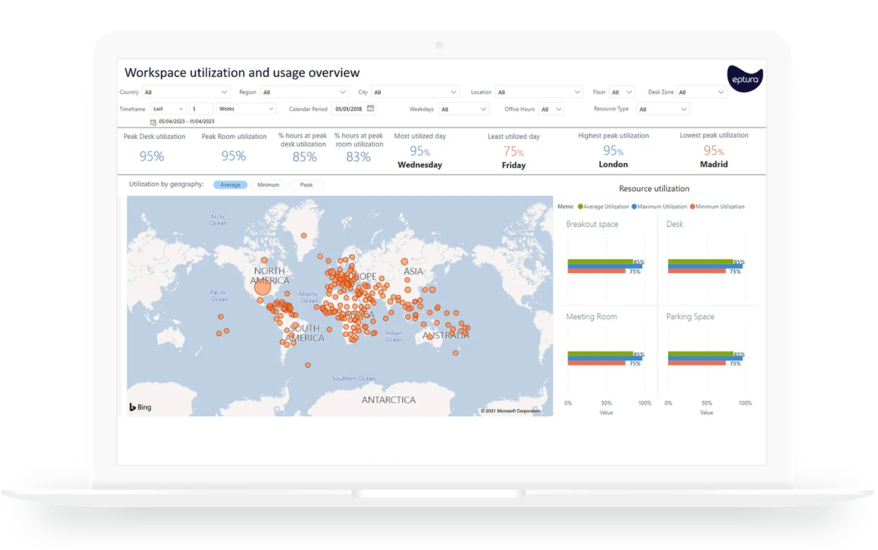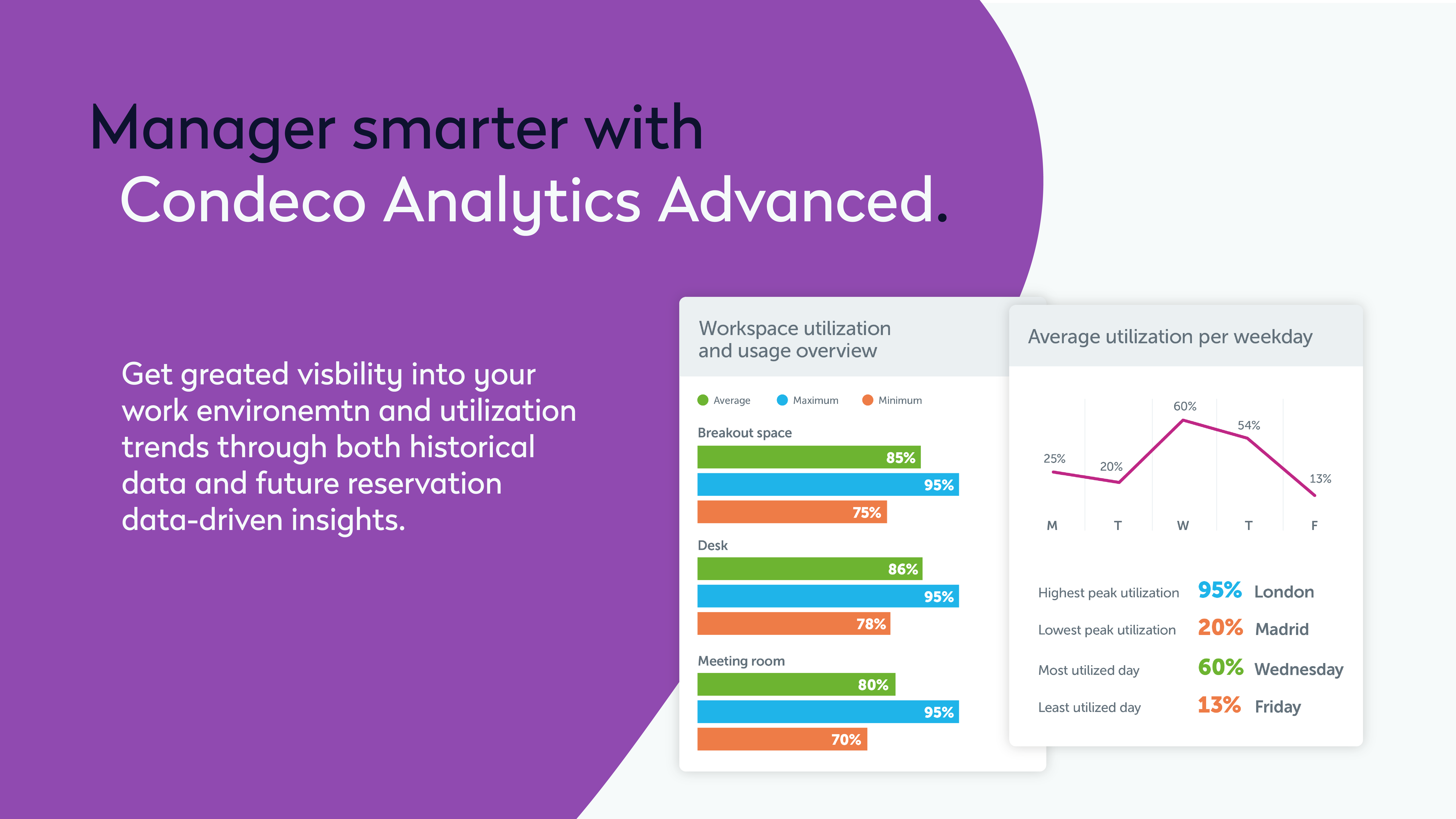
Quick quiz: How many of these can you answer about your facilities? How much office space do you need? What days of the week are employees actually using the existing space? Which meeting rooms are used most? How many no-shows to the office do you have on average every month or quarter? Do you have the right kind of space for the work being performed within it?
But even before you start, it’s important to think of what you need to get good answers. You need accurate, reliable workspace data with a global scale. And your data needs to be at the ready, in real time, easy to view, and easy to share with decision–makers. Do you feel you already have both?
For most of us, it’s not that our workspace systems have too little data. The amount of data in our buildings and office systems – and in our resource scheduling software – is vast and expanding. The problem is how that data is presented and made more meaningful for workspace planning, for improving the employee experience, and for managing real estate and building investments.
The solution starts with changing our mindset toward the value analytics can have for business users. From there, we can begin to take the right steps toward optimizing our spaces.
Why is an analytics mindset important?
To help measure success for the long term.
Data analytics allows you to see statistical patterns of behavior over time. And given how fast change is happening within the workplace – informed decisions are becoming even more critical.
Investing in data gives business teams the information they need to harmonize business processes with today’s employees – wherever and however they work both in your office and outside of it.
Research shows data-driven organizations perform better than competitors and are better equipped to meet the needs of business users and customers. A Forrester Consulting study found companies which rely on data management tools to make decisions are 58% more likely to beat their revenue goals than non-data-driven companies. And data-driven organizations are 162% more likely to significantly surpass revenue goals than laggards.
Plus, organizations that use data have a 173% advantage in efficiently complying with regulations compared to non-data driven companies, per Forrester. On the flip side, companies with less data maturity are 55% less likely to say internal data management strategies lead to optimal business decisions.
Ultimately, optimizing your workspace using data is just good business over the long haul.
What’s the impact of data analytics on business?
Better planning in the era of hybrid work and the midweek mountain.
As hybrid work models and flexible office arrangements have become more common, there’s more to manage. From office moves to space planning optimization, change in the workplace is constant.
“Firms are investing heavily into solutions that enable hybrid working short term, such as space booking applications, and then considering tools to support longer-term strategic objectives, such as occupancy analysis for portfolio rightsizing and space planning for workplace redesigns,” reflects Ben Hext, industry analyst, at Verdantix.
Our recent Workplace Index Report, based on data from our 16,000+ customers, reveals a 495% increase in the number of collaborative room and desk reservations booked by employees worldwide. As office occupancy rates expand, you’re constantly examining the impact of changing work patterns on the built environment. And, in partnership with HR and IT teams, you’re closely analyzing employee engagement while monitoring daily and weekly changes to building and workspace occupancy.
Beyond more room and desk bookings, our data also revealed attendance patterns for the days of the week. Mondays and Fridays are generally the least trafficked days in our customers’ offices. Peak days are Tuesday, Wednesday, and Thursday – something we’ve dubbed the midweek mountain.
“Is the Tuesday through Thursday attendance a point in time or is this permanent?” asks a real estate director customer of ours in the financial services industry. “I have to decide now on renewing leases and renovating floorplans for the next three years. Am I planning around a trend or the new forever way to work?”
It’s a real dilemma. Hybrid work models are dominating today’s workplaces, but it doesn’t mean it will necessarily be this way forever. It is difficult to predict. Forecasting the workplace is pretty complex. Employees want flexibility, but organizations need more certainty to manage costs and foster culture.
The human need for in-person collaboration and social connection are valuable. Studies on social workplace behavior and its positive effects on talent retention and job satisfaction cannot be ignored. Microsoft’s “2022 Work Trend Index” report found major interest in being with others in the office: 84% of employees would be motivated by the promise of socializing with co-workers. Similarly, 85% of workers would be motivated by rebuilding team bonds.
As we found in our Workplace Index research, being on-site is the new offsite. It’s an experience. And it’s one which requires a clear understanding of facility and workspace data to keep track of how it changes over time.
But having the right mindset and knowing the value of analytics are only the first steps. To make your workspace data actionable and useful, we’ve launched an exciting new addition to our product.
Welcome to the world, Condeco Analytics Advanced
With Condeco Analytics Advanced, you get greater visibility into work environments and utilization trends. Need to see exactly how office space is being used today? Gone is the guesswork. You can now make data-driven decisions faster and with more accuracy.

Tired of tiny columns and rows of numbers in a spreadsheet? Time for rich, visually pleasing dashboards using data in context directly within the workplace scheduling system you already use. Say yes to data dynamic.
You can now:
We made sure Condeco Analytics Advanced gets you beyond the headlines and anecdotal feedback of workplace operations to deliver data-driven insights around workplace resource usage, employee engagement, and long-term demand trends.
Learn more about our Workspace Management software.
See it in action for yourself.



